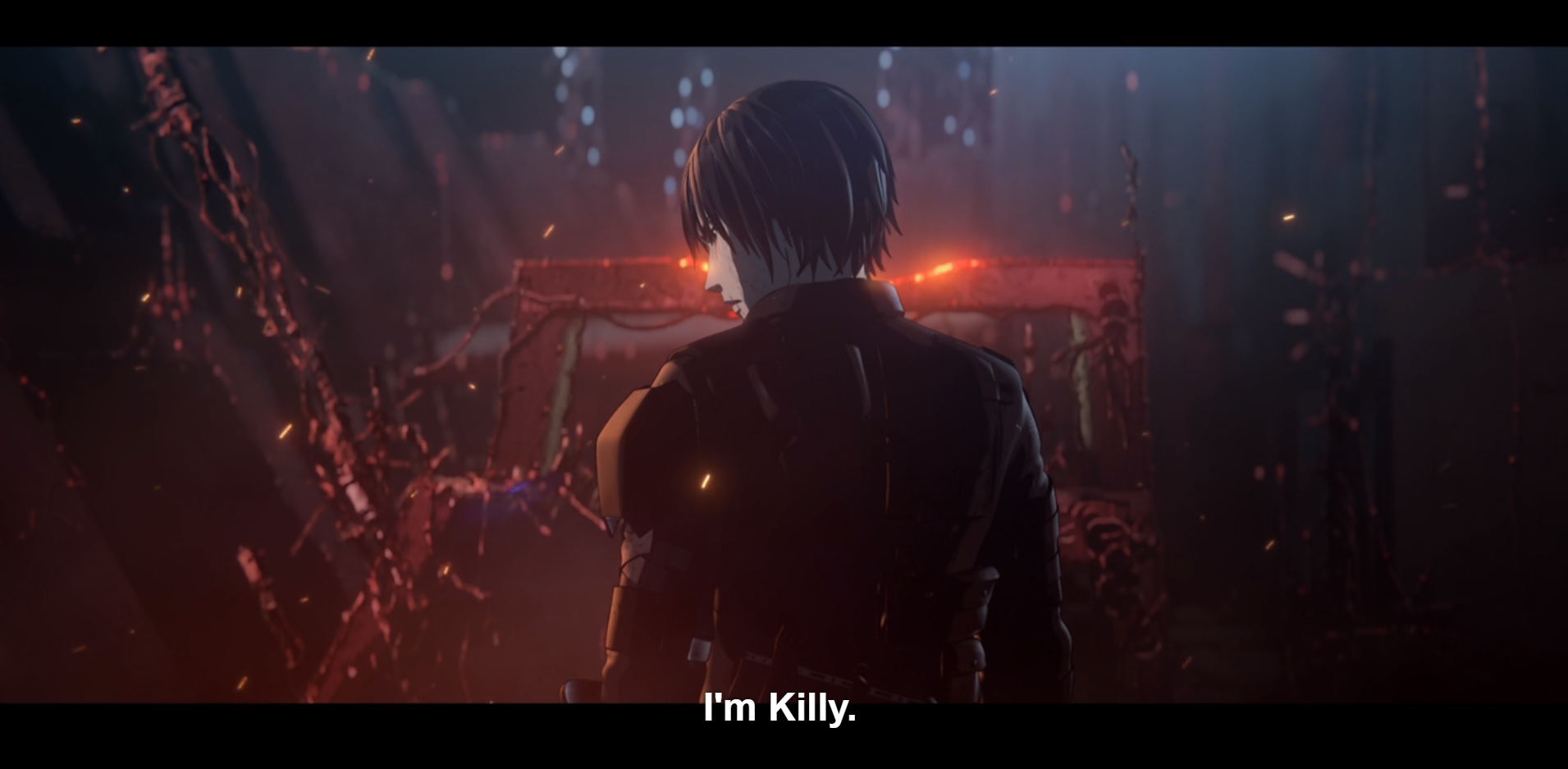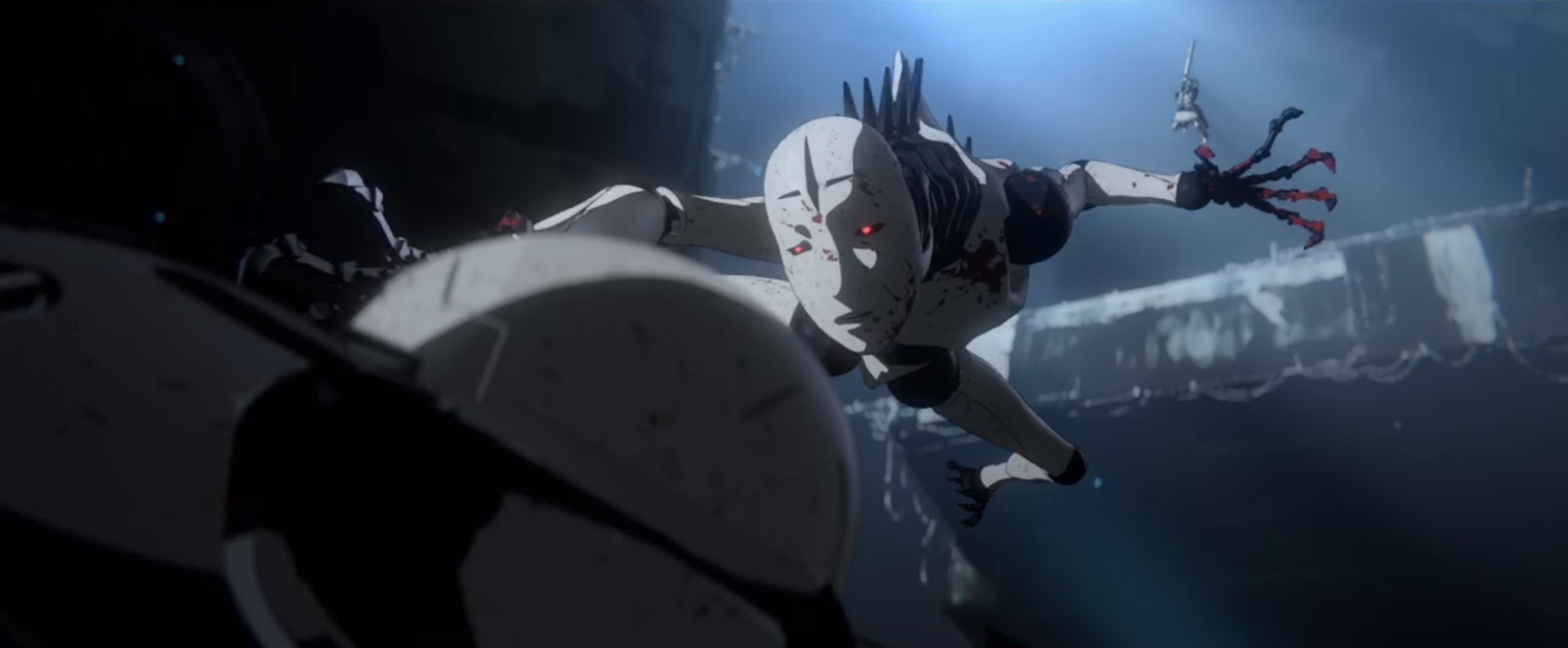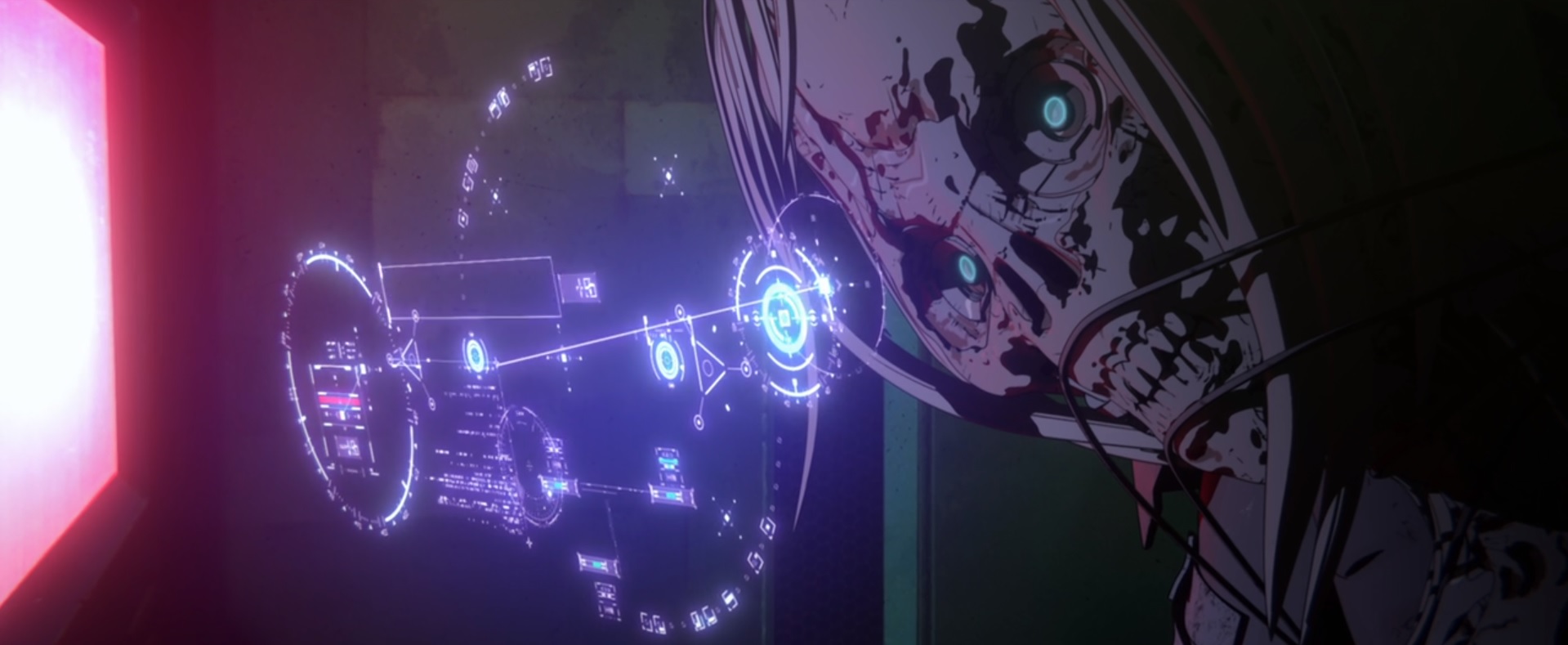Review: Blame!
The Killy Time

According to tales handed down by parents and grandparents, a contagion once spread throughout the world. As a result, humanity’s connection with the machines they built was severed. Those machines then took to building an infinitely expanding city. In the present day, set so far in the future that the few remaining humans have forgotten all the details of history (save their immediate past), a village of roughly 150 people faces starvation. The bargain-basement oasis in which they reside cannot, by some unknown means, be penetrated by the machines intent on killing all humans who do not have the Net Termination Gene (the element that let the humans control the machines previously) and are thus branded illegal residents. But food is running out, and each venture beyond the safety boundary to procure basic sustenance costs the residents irreclaimable materials, lives, and hope. That is, until a strange traveler, the first encountered in a generation, comes to the village.
Blame!, which adapts the manga of the same name from Tsutomu Nihei (Knights of Sidonia), is structured much like the story’s multilayered city. Information is delivered piecemeal between battles and builds upon itself endlessly, while gaps between what is known and unknown are used to exploit interpersonal trust issues. The building of the city being paralleled to the bits and pieces of knowledge gained by the villagers regarding their own past seems like it should lead to a solid conclusion of structure and soul, but it does not. This, spoilers, may just be a really good parallel. I’m not pining for a happy ending here … just some sense of justification for the journey. And the movie, intentionally or not, doesn’t deliver on that. What Blame! does provide, through some commendable visuals and storyboarding, is an energetic romp of adrenaline through a very defined and believable world.

First, there’s the dichotomy of flesh and metal — blurred for the sake of camouflage when the villagers go hunting for food but also to force certain questions about certain characters’ claims of humanity. Take the melding of the organic and inorganic: fleshy humans are seen third-person in metal suits, and the animation sometimes inserts CGI characters into traditional backgrounds. These contrasts are quite apropos given the world into which viewers are dropped. The electro-fishers’ (villagers’) armored suits make the humans appear more machine-like, especially with the three lenses in the helmet; the skeletal, piston/rod-like effect from the white & black coloring of their arms; and the dalek-like globes on their leg armor. This effect is countered by sporadic looks beneath helmets to see characters’ faces and, in some instances, distanced via first-person views of tactical readouts on HUDs. The former is a good tactic to remind the audience of the human inside the metal, while the latter is necessary to call out the link between man and machine. (Also to make action scenes all the more exciting.)

Regarding the other side, the design of the sentries’ Safeguard’s exterminators evoke an uncanny valley effect. They walk insect-like on all fours and sport a basically human design featuring a mannequin-like mask attached to a slightly extended neck and metallic, claw-like fingers. It’s a sublime design comprising visual references to a combination of the organic and artificial, but it and other designs distractingly point to other sources.
To get through this movie, viewers must be willing to yield the blatant influence of 30-plus years of sci-fi and horror movies. The first big battle is reminiscent of the scene under the cooling towers in Aliens, and the premise (as well as robot designs and backgrounds) scream The Matrix and Silent Hill. This is not so bad as it is unapologetically derivative. The culmination of techniques and visuals, after all, is a frantic fight that feels furious and personal between protagonists and antagonists (to which viewers have only just been introduced).

The flow of violent encounters between man and machine feels real thanks to several aspects. The jolty camera feels like the view from someone veering through a helmet while panting from running along with the subject. That also helps sell movements of humans in their bulky suits. The visuals also do a great job at establishing scale; tight shots in close quarters with lots of obstructions naturally convey the cramped conditions. This lends things a certain speed via the character-to-space ratio and parallels humanity’s rat-against-the-wall situation on the whole. Vice versa, long shots effectively show relative size and affect a sense of distance — a drawing out of time or the expectation of which it will take characters in the shot to traverse such distance. Given the speed of the enemies, this kind of space adds pure terror or, at the very least, a sense of trepidation over the long way to go. All of this is drastically important to making a cat-and-mouse situation feel dangerous to the viewer sympathizing with the protagonists.

Even though it moves well, that does not mean Blame! moves me. Unlike most of the character-driven anime I enjoy, Blame! has some potentially interesting characters whose development is forsaken for time. The problem is this: if Blame! was an anime series, it would lose its sense of immediacy. So to keep the drive alive and the pace engrossing, characters’ transgressions are forgiven or forgotten and romantic ties and their trauma seem slapped-in for an attempt at roundness that comes across as a child’s deflated ball. But the pacing is solid. It’s easy for your eyes to adjust to the atmosphere of the world and identify with what comes down to a scavenging mission, and then the movie drops the fight-start flag. But more tender moments, explaining humanity’s current plight through the individuals we spend time with, punctuate the movie’s action-heavy hand with appropriately brief moments of rest and solemnity. This, however, reflects more on the village as a whole than any particular character.
Animation production is handled by Polygon Pictures, which was also responsible for Ajin and Knights of Sidonia. So from reactions I’ve heard, viewers who’ve seen those titles probably know what they’re getting into. I’ve yet to see either but did find the art and animation more adept than, say, Karen Seki. For what it’s worth, I think the CG characters, though rather jolting at first, are serviceably rendered. Whether or not that’s actually poignant to the plot is for the audience to decide. This is, after all, a movie about an eternally expanding city that’s wiping out life as humans know it. Not exactly subtle, but the visuals are what tell the story here and not the characters.

